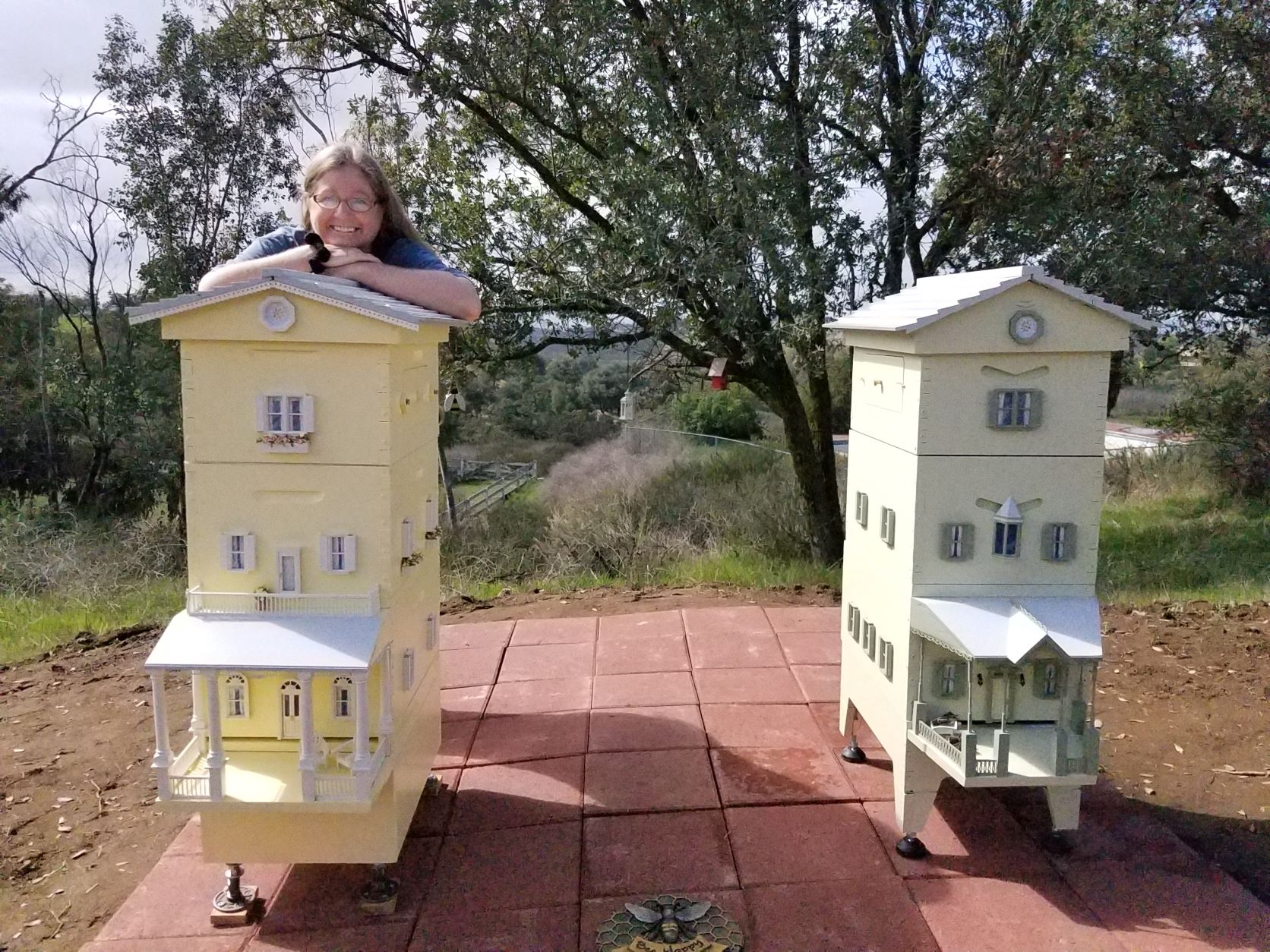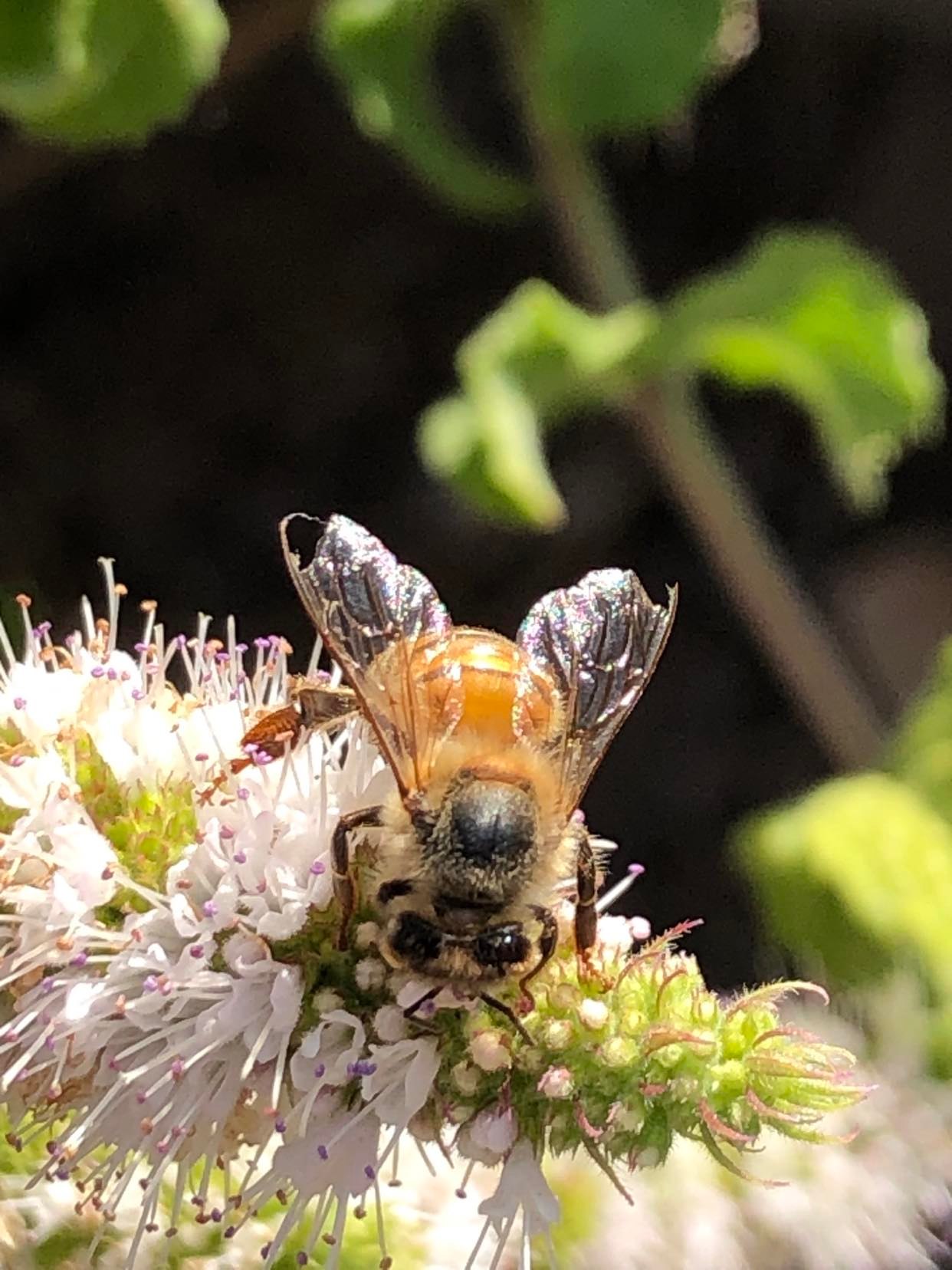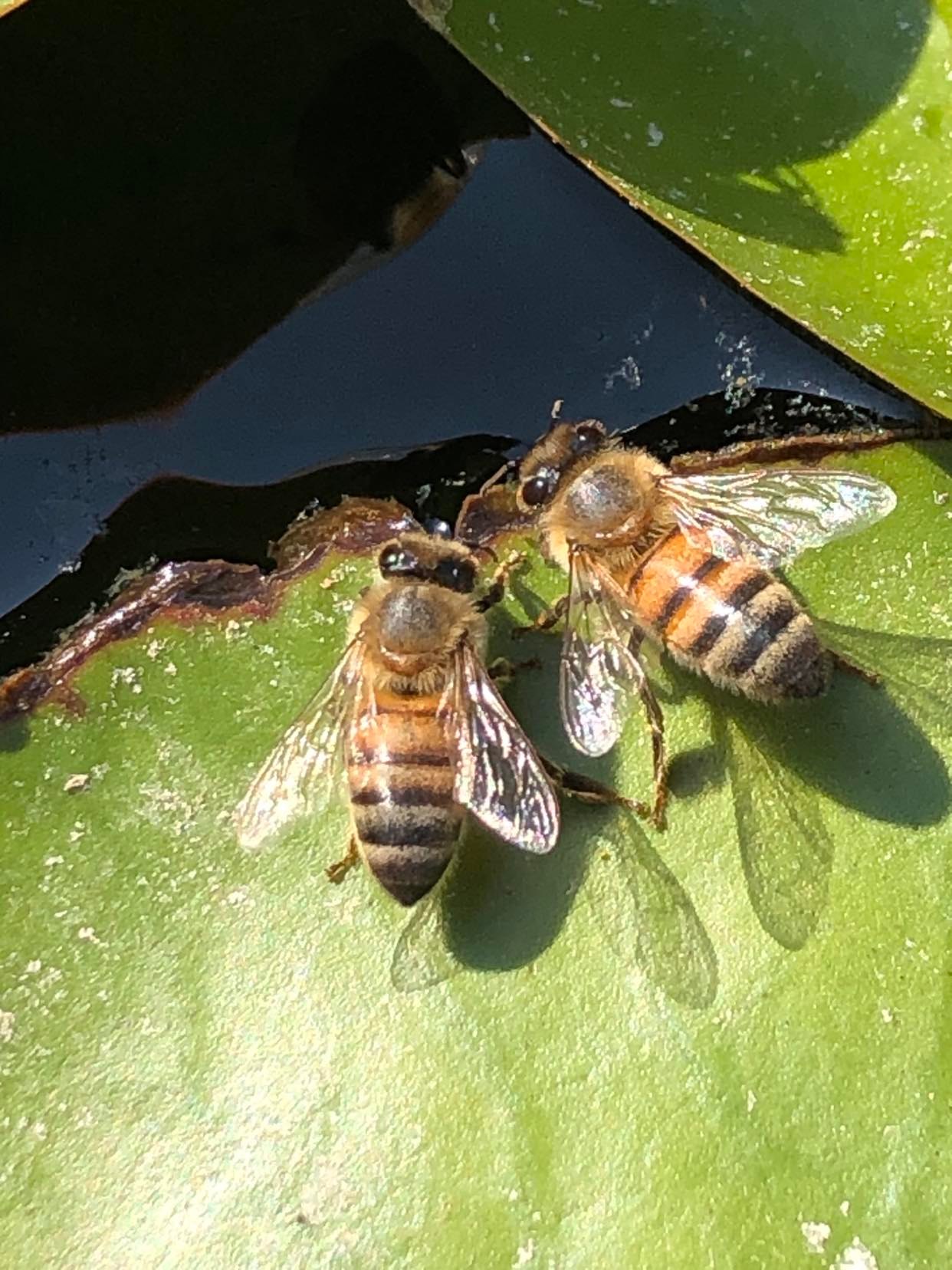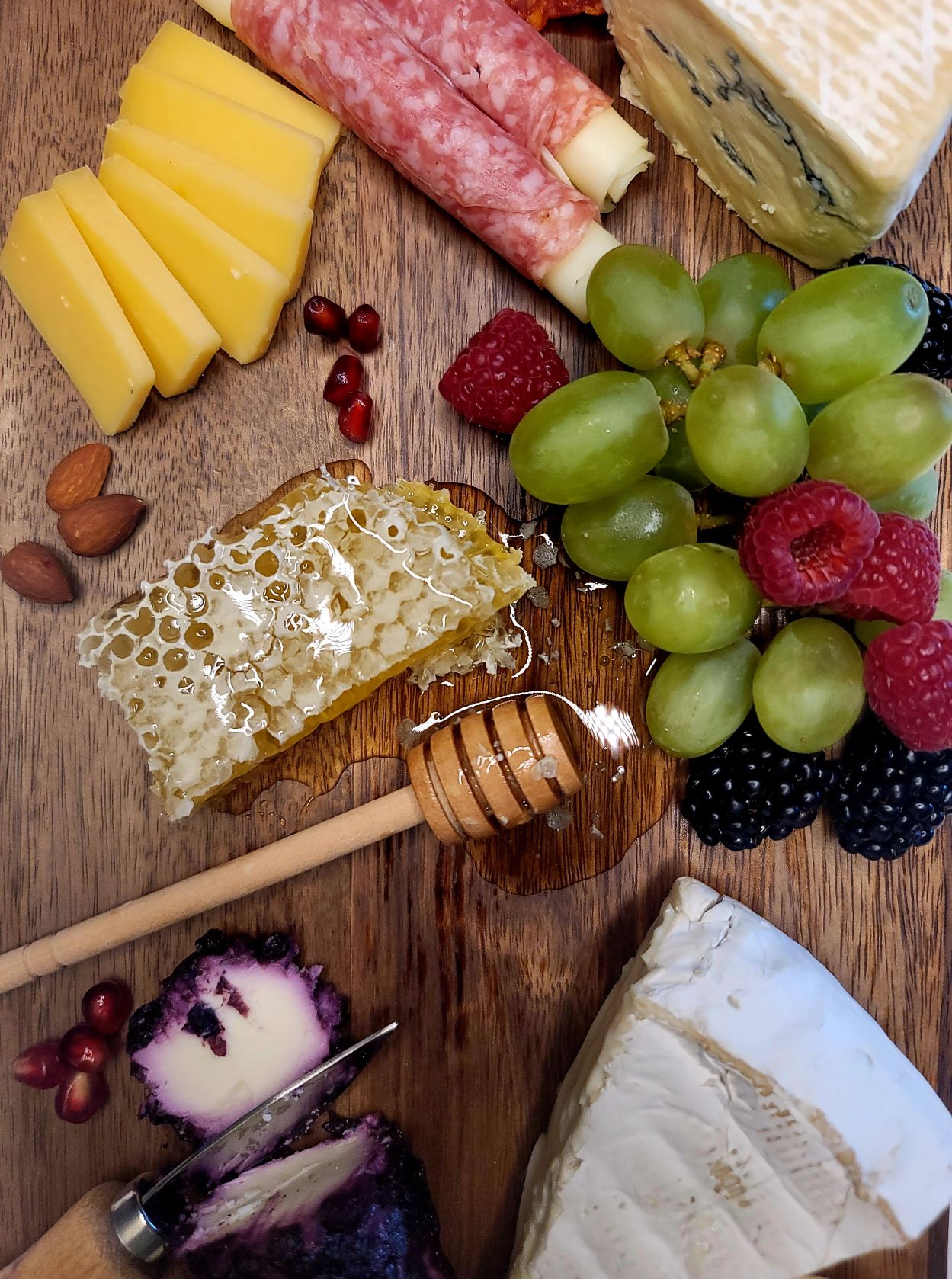About the Beekeeper
As a California native, Sheryl Heyser has enjoyed the sun and the Southern California lifestyle. When she was young, her mother was always involved in many interests and explored several hobbies, including beekeeping. Working alongside her mother, Sheryl felt an immediate attachment to these amazing creatures and dreamed of someday having a bee yard (apiary) all her own. Today, she has two apiaries – one in Ventura County (Simi Valley), and one in San Diego County (Ramona). What started out as a way to help the endangered honey bee ended up being several high-producing colonies that aid in the pollination of the area surrounding the apiary. California is plagued with drought conditions and so fresh water is provided for the bees at all times. Our honey bees are not the only ones who enjoy this fresh water, as wild game and wild (feral) honey bees also make use of the water source. California Girl Honey prides itself on high quality natural honey. We sell both honey still in the comb, and bottled raw honey. We run the extracted raw honey through a 600-micron screen, which allows the pollen through. Each year we only harvest a small portion of the honey so the bees have enough of their resources to feed their colonies throughout the fall and winter when nectar is very scarce. As such, honey may not be available for purchase at times during the year – when supplies run out, we must wait for the next season. California Girl Honey donates a portion of its profits to Hives for Heroes, a national Veteran non-profit organization focusing on honey bee conservation, suicide prevention, and a healthy transition from service. Hives for Heroes helps veterans transition through beekeeping; it honors and empowers our nation’s heroes as they begin their journey in beekeeping.
HivesForHeroes.com




About the Bees
Honey varies in taste depending on the environment and which flowers the bees pollinate to produce the nectar.
The Montgomery Ranch Apiary in Simi Valley California
The Montgomery ranch apiary is located in the west end of Simi Valley. Honey bees can fly up to eight miles to forage for nectar, and within the eight mile zone of this apiary are numerous citrus and avocado groves, rolling hills of local wildflowers, and the rose garden at the Reagan Library. Depending upon the time of year, the honey harvested from the Simi Valley apiary can come from orange or avocado blossoms, countless varieties of domestic garden flora such as rose, privet, jasmine, daisies, and lavender, wildflowers such as mustard, lupin, poppy, buckwheat, and wild fennel, or from oak, and eucalyptus.
The Oakanamatu Apiary in Ramona California
The Oakanamatu apiary is located in the heart of San Diego County in Ramona. Nestled in the front range of the Pacific coastal mountains of Southern California, Ramona has a rich history of vineyards and winemaking, and is one of the State’s designated viticulture areas. Hot days and cool nights, influenced by the coastal marine layer and fog, contribute to conditions that produce quality wine grapes in the Ramona Valley. Although bees don’t pollinate grapevines (grapes are hermaphroditic – meaning they carry both male and female reproductive structures and therefore fertilize themselves), bees are vital to vineyards because they are the primary pollinators of the cover crops necessary to aid in the replacement of nitrogen – a vital nutrient required for the success of the vine. As bees gather pollen and nectar, they pollinate the cover crops which are then more lush and viable, and able to efficiently return nutrients to the soil. Depending upon the time of year, the honey harvested from the Oakanamatu apiary can come from cover crops such as grasses, clover and mustard, or wildflower blossoms such as sage, buckwheat and Rosemary, or from sumac, oak, and eucalyptus.
How to Eat Comb Honey
Many people recognize the importance of fresh honey still in the comb, but it's a mystery to most as to how to enjoy
one of nature’s great delicacies.
Yes, honeycomb is edible. It is safe and delicious to consume the waxy hexagonal containers of
the comb, as well as the honey. The added chewy texture of the comb is a bonus! Of course, some people prefer just to chew the comb until the
honey flavor is gone and then discard the wax, but there are so many ways to enjoy honeycomb.
Keep it simple. Pure honeycomb is yummy all on its own, but pairing it with different combinations can really enhance the
flavors and is quite fun.
Here are a few suggestions -
Start slow by testing a bit of comb honey on a salty cracker such as a Trisuit or Saltine with some cheese. Don’t use a
sweet cracker, such as a Ritz, the flavor of which may detract from the honey. The cracker should be small enough to
consume in one piece but not so small that it is difficult to stack a slice of cheese with a bit of honeycomb. We have
found that the type of cheese is not terribly important, we typically use cheddar or parmesan. You can either slice the
honeycomb, or simply scoop it out of the container with a tea spoon.
Expand your tasting by adding nuts, fruits, berries, bread, thinly sliced meats, such as prosciutto or salami, or chutneys
on top of the cracker, topped with a generous bit of comb honey.
Then, omit the cracker all together and try some flavored olive oils straight on
the cheese or meats, topped with the honeycomb.
Next, get crazy with different cheeses such as blue cheese, goat cheese, or Manghego – there is no wrong combination!
Once you’ve had a chance to experiment with different combinations, you’re ready to make a very impressive charcuterie
board for your guests, using the honeycomb as the focus.
But don’t stop there!
Try drizzling melted white chocolate over the top of a piece of honeycomb, or dipping a piece in your cup of hot chocolate
on a cold winter night. Don’t forget to spread some of your honeycomb over freshly baked bread, toast, or piping hot
biscuits. The wax melts into the bread and dissolves as you eat it. A pure delight!

How to Make Herb Infused or Spiced Honey – a Great Gift Idea!
What you’ll need:
Ingredients
- Dried herbs or spices
- Fresh, pure Honey
Equipment
- Clean, dry jars and lids (half-pint and pint mason jars work well)
- Non-metal instrument for stirring, such as a bamboo skewer, chopsticks, or the handle of a wooden spoon.
- Clean cloth for wiping honey from the rim of the jar
- Fine strainer
Instructions
- Always use dry herbs. Any moisture in your herbs will add water to your honey and could grow bacteria. Herbs can be in the form of whole springs or separated leaves or petals. Chopping the herbs or spices can add to the surface area and give stronger flavor, but you may end up with small bits of the herbs in the honey that are difficult to strain out. There are many ways to dry fresh herbs; dry in the sun, use an oven on low setting, use a dehydrator or microwave. Some infusing machines have a drying setting built right in.
- Combine herbs and/or spices with the honey: Put the herbs and/or spices in the bottom of the jar and fill it almost to the top with fresh honey. Use your non-metallic stirrer to stir everything together to thoroughly coat the herbs and spices with honey. Top off with more honey to fill the jar, and wipe the jar rim with a clean cloth. Cover the honey tightly.
- Infuse: Let the herbs and/or spices infuse for at least 5 days. If the herbs float to the top, turn the jar over a few times to keep them well coated. For a more intense flavor, infuse for another week or longer.
- Strain: Strain the honey into a clean jar. Depending on the volume of honey, herbs and/or spices, and the size of the strainer, you may need to do this in stages. (Tip: Use the leftover herbs to make a beverage with hot water steeped with a bit of your honey-covered herbs or spices (a Tisane).
- Store: Store the honey in a tightly covered jar in a cool, dry place. As long as you have used dried herbs and spices, your infused honey will last indefinitely.
Recipe Notes
Use approximately 1—2 tablespoons of dried herbs per 1 cup of honey.
Honey: A light, mild flavored honey generally works best. Always try to support your local bees and beekeepers.
Herbs: You can use a single herb, or a combination. Rosemary, sage, thyme, mint, lemon balm, lavender, chamomile, elderberry, rose petals, and pine needles all make lovely infused honeys. You can also use spices like vanilla beans, cinnamon sticks, star anise, chilies, and even cocoa. All herbs and spices should be dry so as not to add moisture to the honey. Bees cap their honey when it is ripe and has just the perfect moisture content.
Don’t forget to label your jars with the contents and the date.
